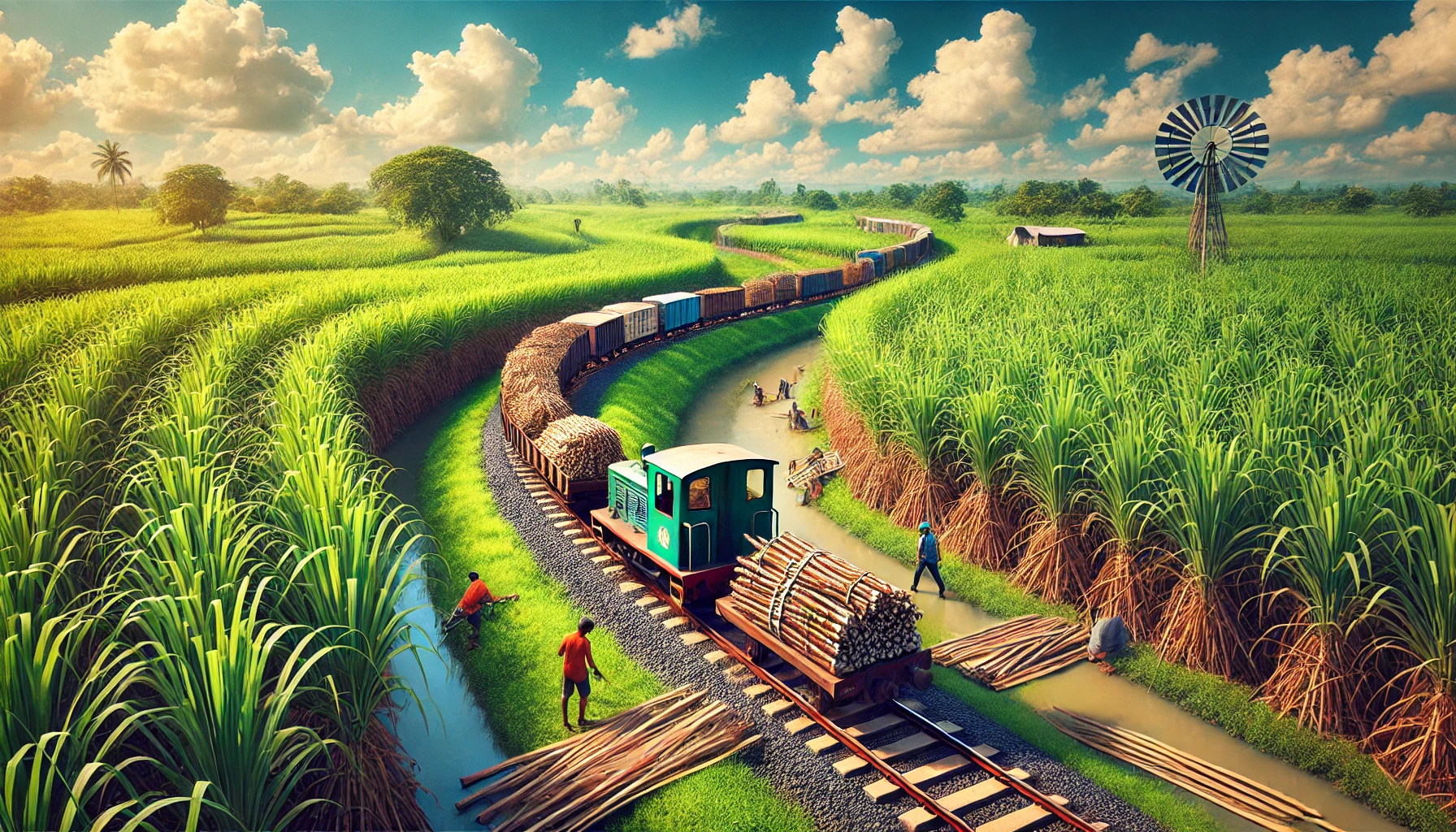
By Daniel Conderman, a wannabe National Geographic Contributor and Rail Enthusiast
The rhythmic clatter of wheels on steel rails, the faint whistle cutting through humid air, and the unmistakable scent of diesel mingling with the earthy aroma of sugarcane fields—these are the sensory hallmarks of narrow-gauge railways that weave through rural landscapes in parts of Asia. As a lifelong railfan, I’ve marveled at the grandeur of transcontinental trains and the precision of high-speed rail, but nothing captures the raw ingenuity and resilience of human transportation like these tiny, often overlooked railways.
An Ingenious Solution to Local Challenges
Narrow-gauge railways, defined by their reduced track width compared to standard gauge (1,435 mm or 4 ft 8 1/2 inches), are a triumph of practical engineering. In regions where rugged terrain, dense vegetation, or economic constraints make standard rail impractical, these smaller railways thrive. Common gauges range from 610 mm (2 ft) to 1,000 mm (3 ft 3 3/8 inches), with many systems opting for even narrower widths tailored to their specific needs.
Take, for example, the sugarcane fields of India’s Maharashtra state. Here, narrow-gauge tracks snake through undulating fields, transporting bundles of freshly cut stalks to processing mills. The portability of these railways—some systems can have their tracks disassembled and reassembled within hours—makes them invaluable during harvest seasons. This adaptability is critical for industries like agriculture and logging, where transport needs are dynamic and geographically dispersed.
The Rolling Stock: Compact Powerhouses
The locomotives that power these diminutive systems are as captivating as the railways themselves. Many of the engines are diminutive diesels, their compact frames belying a robust ability to haul astonishingly heavy loads. On some lines, you’ll even find steam engines still puffing valiantly through the countryside, relics of a bygone era maintained through sheer mechanical know-how.
What truly sets these systems apart are the wheels. A distinctive feature on some railways is the use of dual-purpose wheels—standard flanged wheels for rails paired with an outer, wider surface resembling a rubberized tire. These “compromise wheels” allow locomotives to traverse not only tracks but also unpaved roads or mismatched rail gauges, an ingenious solution born of necessity in areas where infrastructure may be inconsistent or sparse.
Cargo That Defies Proportion
The sheer audacity of the loads these railways carry is a testament to their utility. Long flatcars stacked with impossibly tall bundles of bamboo, sugarcane, or timber are a common sight. While the rickety appearance of these trains may raise eyebrows, it’s important to note the precision with which these systems operate. Workers manually load and balance cargo, ensuring stability on the often uneven and shifting tracks.
Tracks on the Move
Perhaps the most striking feature of these railways is their adaptability. In regions like Cambodia, temporary railways known locally as “bamboo trains” (or “norries”) epitomize this spirit. Lightweight bamboo platforms equipped with small gas engines can be placed directly onto tracks, creating an improvised transport system that’s dismantled as quickly as it’s set up. These systems have been used to ferry everything from crops to passengers and demonstrate a profound understanding of local needs.
In India’s Assam region, portable railways are a lifeline during the monsoon season, when roads become impassable. Workers unceremoniously pick up and move sections of track to follow shifting agricultural demands, a feat of logistical dexterity that larger rail systems could never match.
Cultural and Historical Context
The origins of these railways often trace back to colonial infrastructure projects. Narrow-gauge lines were laid to serve plantations or mines, their construction cheaper and faster than standard rail. Over the decades, these systems were adapted and repurposed to meet the changing needs of local communities.
One of the most famous examples is the Darjeeling Himalayan Railway in India, a UNESCO World Heritage Site. While its primary purpose was to transport tea and supplies, it now operates as both a cultural artifact and a functional passenger service, winding through the misty hills of West Bengal.
Preservation vs. Modernization
While narrow-gauge railways are a marvel of ingenuity, they face an uncertain future. Modernization pressures, including the introduction of trucks and larger rail systems, threaten their existence. Yet, their value goes beyond mere transportation. These railways preserve a way of life and a form of engineering that embodies sustainability, adaptability, and community.
For railfans like me, narrow-gauge railways offer a rare glimpse into a world where rail transport isn’t about efficiency at scale but about resourcefulness and connection. The thrill of watching a diminutive locomotive triumphantly haul a seemingly impossible load across makeshift tracks is unmatched.
These tiny railways were never meant to achieve the grandeur of the Trans-Siberian or the technological wizardry of Japan’s Shinkansen, but their impact is profound. They serve as a poignant reminder that even the humblest engineering solutions can carry immense cultural and practical significance. As I stand by the tracks, camera in hand, watching a bamboo-laden train clatter by, I’m reminded of why I fell in love with railways in the first place. It’s not just about the trains—it’s about the stories they tell and the worlds they connect.















































































































































































































Garden Railway Chaos: Sugarcane-Style Trains to Play With in the Dirt
Model railroading is often thought of as precise and polished, but let’s be honest—sometimes it’s just more fun to throw the rulebook out the window and get your trains dirty. If you’ve got a garden, some old junk train parts, and a wild sense of adventure, it’s time to build a sugarcane railway-inspired layout. This is a project that’s not about functionality or practicality—it’s about having a blast, getting creative, and playing with trains in the roughest, most chaotic way possible.
Why Sugarcane Railways?
The real-life sugarcane railways of rural India and Southeast Asia are marvels of scrappiness. Tracks wind through fields, engines cobbled together from whatever is on hand haul overloaded carts, and nothing—nothing—is built to last. That’s what makes them the perfect inspiration for a garden railway that’s less about modeling perfection and more about just seeing what you can get away with.
Picture this: toy-grade HO brass track laid unevenly through your garden, hauling makeshift wagons stacked with roses or whatever junk you can pile on top. It’s not pretty, but boy, does it have character.
A Hobby for Junk Lovers
Garden railroading can be an expensive hobby, but not this one. This project thrives on using old, forgotten junk—the kind of stuff that’s been sitting in your garage or shed for years. Broken HO track? Perfect. That busted RC car from a yard sale? Even better. A pile of wires, scraps of wood, and some hot glue? That’s all you need to get started.
How to Build Your Chaos Railroad
- Lay Down the Tracks (Or Don’t): Take that old brass HO track and just toss it into the dirt. Seriously. Wind it through the garden in curves that don’t make sense, leave gaps, or prop it up with random rocks. This isn’t about smooth operation—it’s about raw, scrappy fun.
- Kitbash Everything: Locomotives? Wagons? Forget the model shop—raid the toy box. Turn that old RC truck into a locomotive with a little hot glue and some imagination. Need a wagon? Slap some wheels onto a piece of cardboard or use a kitchen sponge. The more mismatched and haphazard it looks, the better.
- Overload the Wagons: Stack your wagons with roses, weeds, garden gnomes, or anything else you’ve got lying around. Bonus points if the load wobbles precariously with every bump.
Why It’s More Fun to Be Messy
This isn’t a layout for quiet admiration—it’s a layout to play with. Derailments? Hilarious. Wagons that topple over? Even better. The point is to embrace the chaos and see how far you can push your setup before it all goes sideways (literally).
Get the Family Involved
This isn’t just a solo project. Let everyone join the fun:
- Kids: They’ll love designing wacky trains and loading them with garden treasures.
- Gardeners: Haul flowers, tools, or freshly picked veggies around the yard—because why not?
- Tinkerers: Spend hours gluing random stuff together to make the ugliest, most glorious engine anyone has ever seen.
The Joy of Never-Ending Projects
This isn’t the kind of layout you finish. It’s the kind you keep tinkering with, adding new junk and tearing apart old pieces as inspiration strikes. Build a rickety bridge out of popsicle sticks, add a station made of an old shoebox, or rig up a “gravity-powered” train that only runs downhill. The possibilities are as endless as your creativity (and your tolerance for absurdity).
Who Cares If It Works?
This is a layout for people who don’t care if their trains run perfectly—or at all. It’s about the process, the chaos, and the sheer fun of building something ridiculous and watching it do its thing. Whether it’s hauling roses or derailing spectacularly in a pile of weeds, your sugarcane railway will be a hit.
So grab your junk, head to the garden, and start building. You might not end up with the most polished layout, but you’ll definitely have the most fun. And isn’t that what model railroading is all about?


